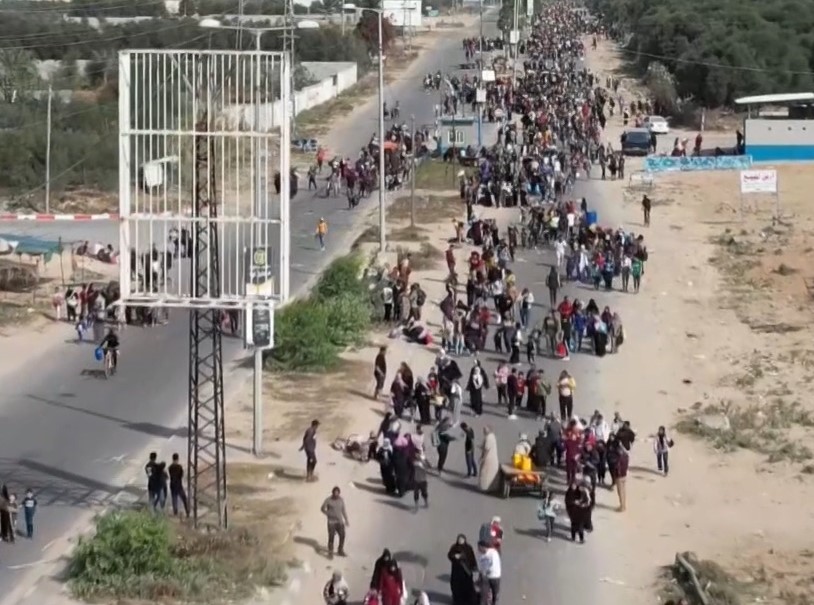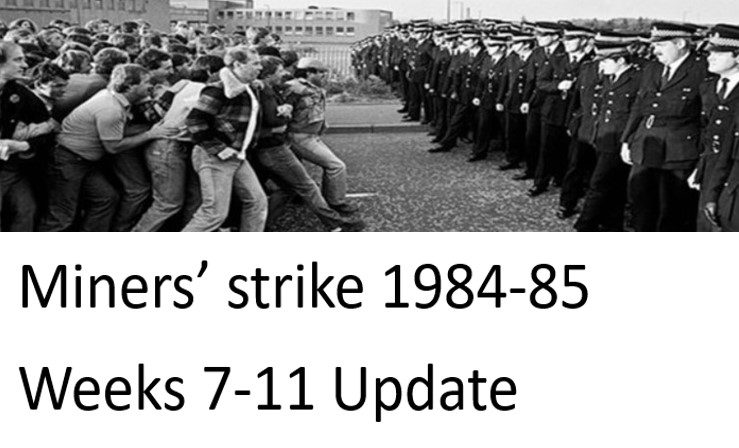By René Backmann
This article is reprinted from the French website, Mediapart.
The Israeli army is using a strategy of total war in the Gaza Strip that does not distinguish between civilian and military targets and deliberately ignores the principle of proportionality of force, which is the foundation of the law of war. In application of a doctrine invented fifteen years ago by one of Netanyahu’s current ministers.
Is it possible that the more than 11,000 Palestinians killed so far in the Gaza Strip, according to the Hamas-controlled Health Ministry, the 27,000 wounded and the 1,500,000 residents of the north forced to flee under threat to the south of the enclave are not mere “collateral victims” of the war between Israel and Hamas?
Is it possible that they are civilian targets deliberately chosen by the Israeli General Staff and assumed by the political power to inflict “intense suffering” on the Palestinian population?
Is it possible that the shutdown of 22 of the territory’s 36 hospitals – due, according to the World Health Organization (WHO), to lack of fuel, strikes and insecurity – the deaths of dozens of sick and premature babies (due to lack of care), nearly 200 health workers, more than 100 employees of UNRWA (the UN agency for Palestinian refugees), of 60 journalists are not the inevitable bloody fallout from the “destruction of Hamas and its military capabilities” that the Israeli army has been carrying out for more than a month?
Is it possible that this slaughter is the marginal component of a collective punishment designed and inflicted by an army obeying the orders of controversial but elected politicians, to “humiliate and terrorize” the civilian population? Is it possible that the destruction by Israeli bombs, missiles, shells of hospitals, schools, United Nations buildings, apartment buildings, technical and health infrastructure is not only a response in the form of revenge to the cruel trauma suffered by Israeli society on 7 October?
Is it possible that the transformation of this encircled and overpopulated territory into a field of rubble is part of a well-thought-out and coldly implemented strategy by cynical political leaders and military personnel determined to free themselves from the imperatives of international law, to “restore Israel’s deterrent capacity” undermined by Hamas?
A doctrine formulated in 2006…
According to Nadav Weiman, head of the veterans’ NGO Breaking the Silence in Gaza in 2008 during Operation Cast Lead, “the statements of the Israeli leadership and the extent of the destruction indicate that the army is applying the same strategy as in previous operations: the Dahiya doctrine.”
Formulated at the time of the 2006 Lebanon war, this doctrine is based on simple, if not simplistic, principles: the disproportionate and devastating nature of strikes, including on civilian structures and infrastructure, and the explicit refusal to distinguish between military and civilian targets. These are clear violations of the laws of war and international law that expose the perpetrators to the charge of war crimes.
The aim of this strategy – its designers and users make no secret of it – is in fact to remind Palestinians “who is strongest so that they understand that it is useless to resist”. Based on the idea that war takes place in phases, this doctrine is not intended to be decisive in terms of the outcome of the conflict, but only to delay and try to deter the inevitable outbreak of the next phase. As the IDF spokesman said recently, “the focus of this operation was on the extent of the damage, not on the accuracy of the strikes.”
“This strategy is not only flawed and futile, it is also immoral because it is based on huge civilian casualties. Tens of thousands of homes in Gaza have been destroyed or damaged. Entire neighborhoods were literally wiped out. And this is because, according to the “Dahiya doctrine”, the firepower used must be disproportionate. That is why the result is always the same: to put the country’s long-term security out of reach, in favor of an illusion of calm in the short term.”
Nadav Weiman is not the only observer of the conflict to have detected the unacknowledged implementation of this disastrous “Dahiya doctrine”. Asked about the use of the latter against Hamas, Yoni Ben Menachem, an Israeli analyst close to military circles, replied: “Yes, absolutely,” before specifying that it was, in this case, a form of “psychological warfare, mainly intended to keep civilians away from Hamas-linked targets.” Daniel Byman, strategic adviser to the U.S. State Department, said: “The doctrine’s general concept that Israel must inflict considerable damage and destruction to restore its deterrence capability clearly applies.”

And according to Yossi Mekelberg, a Middle East expert at Chatham House, Britain’s Royal Institute for International Relations, “the doctrine seems to be in effect in Gaza.” Israeli lawyer Michael Sfard, an expert on the laws of war and human rights, notes that “the very high number of deaths in Gaza does not in itself prove that Israel has violated the laws of war, but it does raise suspicion and shift the responsibility of having to explain and justify its actions to the army.”
… on General Gadi Eizenkot
Taking its name from Dahiya, a Shiite neighborhood in the southern suburbs of Beirut, a Hezbollah stronghold razed to the ground by the Israeli air force in 2006, this doctrine was conceived by Israeli General Gadi Eisenkot. This Moroccan-born officer was head of the operations department of the General Staff after commanding the Golani Brigade.
A specialist in “asymmetric combat in urban environments”, Eisenkot was a proponent of prioritizing destructive power over strike accuracy. “What happened in Dahiya,” he said in 2008, “will happen to all the localities that will be used as bases for firing at Israel. We will use disproportionate force against these areas and cause great damage and destruction. It is not a recommendation, it is a plan, and it has already been approved.
“In the face of an outbreak of hostilities, the army must act immediately, decisively, with force disproportionate to the enemy’s actions and the threat he poses,” said one of Eisenkot’s subordinates, Col. Gabriel Siboni, expounding the doctrine on behalf of Israel’s National Institute for Security Studies (INSS). “Such a response,” he added, “is intended to inflict considerable damage and loss, to raise the punishment to such a level that it will require a long and costly process of reconstruction.”
Precedents in 2008, 2012 and 2014
According to Fouad Gehad Marei, a researcher at the universities of Lund (Sweden), Erfurt (Germany) and Birmingham (UK) who has analysed the Lebanese, Syrian and Iraqi conflicts, “the Dahiya doctrine guided the Israeli army’s operations in Gaza in 2008, 2012 and 2014. During each of these wars, human rights organizations and organizations in the international community criticized Israel for its disproportionate use of force and the extent of the damage inflicted. It is clear that the explicit intention to inflict immense destruction and to disregard military and civilian targets is a violation of international laws and conventions.”
Used in 2014, according to Yossi Mekelberg, the Dahiya doctrine had already been used during Operation Cast Lead in December 2008 and January 2009, according to a United Nations report by four experts, published in September 2009. The report did not result in any prosecution of Israeli officials for the deaths of 1,400 Palestinians, including 758 civilians, and the destruction of industrial infrastructure, food production companies or water supply facilities.
Will impunity also protect those responsible for the current Gaza war? One thing is clear: today’s political and military leaders will find it difficult to deny the implementation of the Dahiya doctrine since the beginning of the operation to “destroy Hamas.” The daily course of the war, in which Israeli strikes do not spare the Palestinian civilian population, confirms day after day the Israeli regime’s unpunished contempt for the laws of war. And international law in general.
This is not surprising when we know that Gadi Eisenkot, inventor of the Dahiya doctrine fifteen years ago, a potential war criminal, belongs to Netanyahu’s war cabinet, with the title of minister without portfolio. And the role of observer…
From the French website, Mediapart, the original is here.



